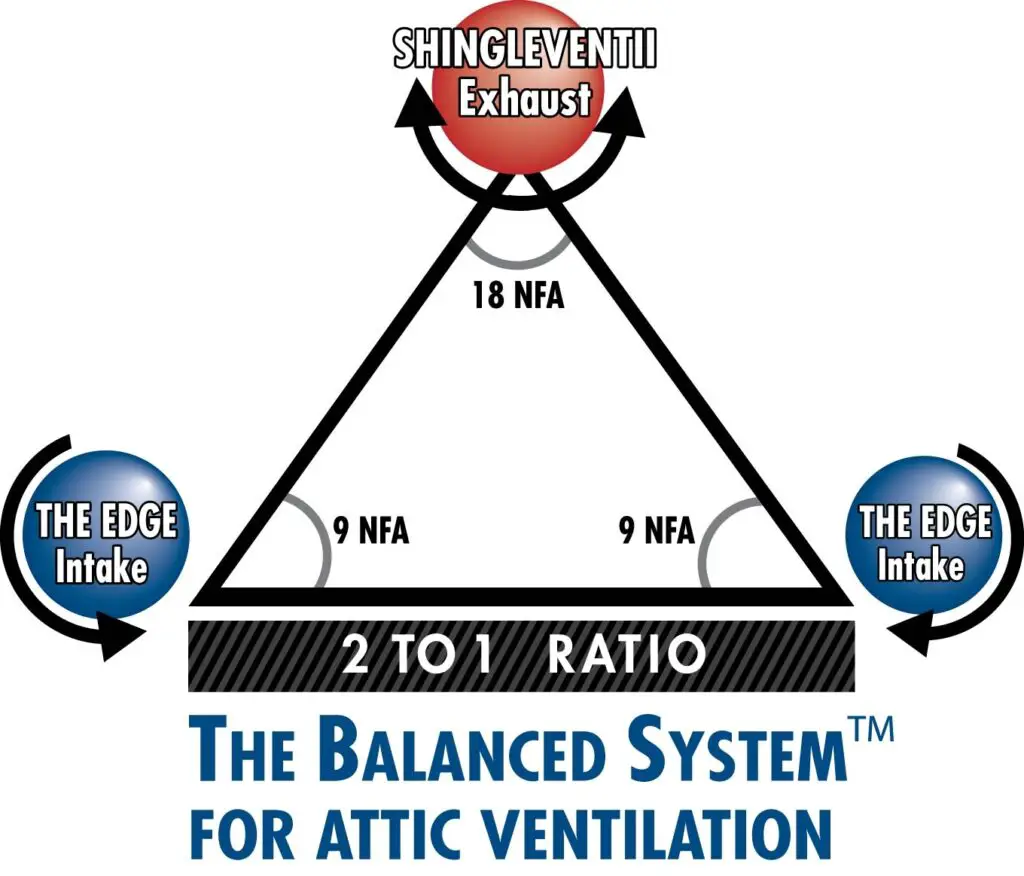Exhaust Vents without Intake Vents is Bad News
By Paul Scelsi for Air Vent • November 2, 2024
Reviewed by Jack Gray

Problems include unvented attic areas and weather entry
There is no amount of attic exhaust ventilation that will work properly if it does not also have the correct amount of intake ventilation. Intake is just as important as exhaust in attic airflow, but it often does not get the attention it needs.
During the Q & A sessions of our seminars I am often asked, “Is having attic exhaust ventilation without sufficient intake airflow at least something and better than nothing?” The brutal truth is, “No.”
Attic exhaust ventilation cannot work if it does not have proper intake airflow. That’s why we always emphasize in our educational content that attic ventilation is a two-piece puzzle: intake and exhaust.
The purpose of an attic ventilation system is to help fight potentially problematic heat buildup, moisture buildup, and ice dams. To properly tackle those trouble areas, the attic airflow must be balanced with 50% intake vents and 50% exhaust vents. Thus, without proper attic intake airflow to support the exhaust airflow, not only will the attic ventilation system not work correctly to fight heat, moisture, and ice dams – but other problems can occur.
Problem #1: Weather infiltration. We have seen attic exhaust vents that are starving for proper intake airflow become sources of weather entry into the attic. Here’s two examples:
- In our testing ridge vents can pull air from themselves. Literally one side stays exhaust but the other side of the ridge vent becomes intake if it cannot obtain proper intake airflow from low on the roof or in the overhang. We do not want a ridge vent ingesting air and whatever Mother Nature is carrying with that air: rain, snow, or debris straight into the attic through the vent.
- We’ve also seen individual off-ridge vents, box vents, dormer vents, and wind turbines pull air from each other if they cannot receive the necessary amount of intake airflow from lower on the roof or in the soffit where intake vents are positioned. Picture a box vent or a wind turbine pulling in weather. That’s a bad situation.
Problem #2: Premature Motor Burnout. If the attic exhaust vent has a motor such as traditional electric or solar powered fans, and they are not receiving their required amount of intake airflow it can cause the motor to prematurely burnout and fail. In addition, a power fan could pull air from the conditioned living space if it does not have proper intake. Both of these scenarios are problematic.
Problem #3: Shingle Warranty Coverage Could be at Risk. The full terms of the shingle warranty are tied to proper attic ventilation. By “proper” the shingle manufacturers mean a balanced system of intake and exhaust ventilation. It’s not just exhaust airflow that is needed.
Problem #4: Building Code Violation. Besides detailing the amount of attic ventilation that is needed, the International Residential Code (chapter R806 of the IRC) clearly states: “Ventilators shall be installed in accordance with the manufacturer’s instructions.” Those written instructions include “Exhaust vents need intake vents.”
The number one mistake in attic ventilation across North America is insufficient and incorrectly installed intake ventilation. We hope informative content like this helps change that statistic.
About the Author: Paul Scelsi is marketing communications manager at Air Vent and leader of its Attic Ventilation: Ask the Expert™ seminars (gibraltarbuildingproducts.com). He hosts the podcast, “Airing it out with Air Vent,” and he’s the chairperson of the Asphalt Roofing Manufacturers Association Ventilation Task Force.